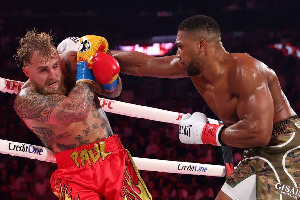Business News of Monday, 5 May 2025
Source: Oluwole Dada, Contributor
Leadership and the amplification of team's efforts and results
One of the best ways to keep a winning team is to recognize them. Recognition is shown when leaders project the result-focused members of their team to senior executives in the organization. It sends a signal to them that they are valued. The most successful directors don't draw all the attention to themselves.
Rather, they direct attention towards their direct reports who are doing well. Exceptional leaders understand that sustainable success comes not from personal accolades but from developing and showcasing the talent within their teams. This approach creates an interesting virtuous cycle.
The recognized employees deliver stronger results, which in turn elevates the entire organization. The outstanding results ultimately reflect well on the leader who orchestrated it all.
When you project your team members and recommend them for reward and recognition, it makes them give more than you can ever imagine. They go to any length to make sure you succeed. Personally, I have been a beneficiary of bosses who speak behind me to senior management regarding the great work I do in the respective positions I have worked with such managers. When I got the feedback of this great gesture of theirs, it motivated me to give more towards the achievement of results in my district and by extension the region. These bosses are held in high esteem by me and will forever be my favorites. My promotion came from the good words they put in for me but most importantly behind me.
Adobe CEO Shantanu Narayen implemented what the company calls its "Impact Players" program, which fundamentally changed how career advancement works within the organization. Rather than traditional paths based primarily on tenure or reporting relationships, Adobe's system allows any leader to nominate team members who have made exceptional contributions, regardless of their position in the hierarchy. These nominations are reviewed quarterly by a cross-functional committee of executives who don't directly manage the nominees, providing objectivity to the process. Selected individuals receive not just financial rewards but also direct exposure to Adobe's C-suite through invitation-only development sessions.
"We discovered that when leaders actively champion their team members for recognition, not only do those individuals perform better, but the recommending leader's overall team results improve by an average of 23% in the following quarter," reported Adobe's Chief People Officer Gloria Chen. "It creates a flywheel effect of performance." The program has contributed to Adobe's industry-leading employee retention rate of 92%, far above the technology sector average of 77%.
Projecting team members that are doing well is a way to boost employee engagement. When your team recognizes that a behavior is rewarded, they are enabled to keep repeating that behavior. When they repeat a behavior that made them achieve outstanding results, the leader of the team end up with sustained results. There is a neuroscience dimension to recognition.
Research in organizational psychology explains why recognition is so powerful. When employees receive public appreciation, especially from higher levels of leadership, it triggers dopamine release associated with motivation and satisfaction. More importantly, it activates the brain's
"social reward" networks, which some studies suggest can be more motivating than financial incentives alone. This neurological response helps explain why teams with recognition-focused leaders demonstrate 31% lower voluntary turnover, 37% higher productivity and a 22% higher profitability (according to Gallup
research)
Three Practical Recognition Strategies
• Implement Recognition Metrics
LinkedIn implemented a strategy which evaluated managers partly on their ability to develop and advance team members. Specific metrics include the number of team members promoted within a given period, percentage of team receiving formal recognition or awards and employee satisfaction scores specifically focused on "feeling valued"
• Establish Recognition Rituals
Adobe formalized a nomination process that ensures that recognition isn't left to chance. Small teams can benefit from monthly "impact awards" with specific criteria aligned to team goals, dedicated time in team meetings for peer recognition and documentation of team accomplishments that gets shared upward
• Connect Recognition to Development
Marriott has an approach that links recognition to professional growth. Leaders can include career discussions as part of the recognition process. They can also use recognition as an opportunity to identify leadership potential
The most effective leaders understand a fundamental truth that their ultimate success is measured not by personal achievement but by the collective accomplishment of their teams. By systematically projecting team members to senior management and ensuring their contributions are recognized and rewarded, these leaders create environments where excellence flourishes.
As former Starbucks CEO Howard Schultz observed, "Success is best when it's shared." Leaders who make it a principle to shine the spotlight on others rather than themselves don't diminish their own impact. Instead, they create the conditions for sustainable success that benefit everyone: their teams, their organizations, and ultimately, themselves. The corporate landscape is littered with the remains of leaders who burned brightly but briefly. The leaders who leave lasting legacies are those who understand that their most important job isn't to shine but to illuminate the brilliance in others.
Oluwole Dada is the General Manager at SecureID Limited, Africa’s largest smart card manufacturing plant in Lagos, Nigeria.












